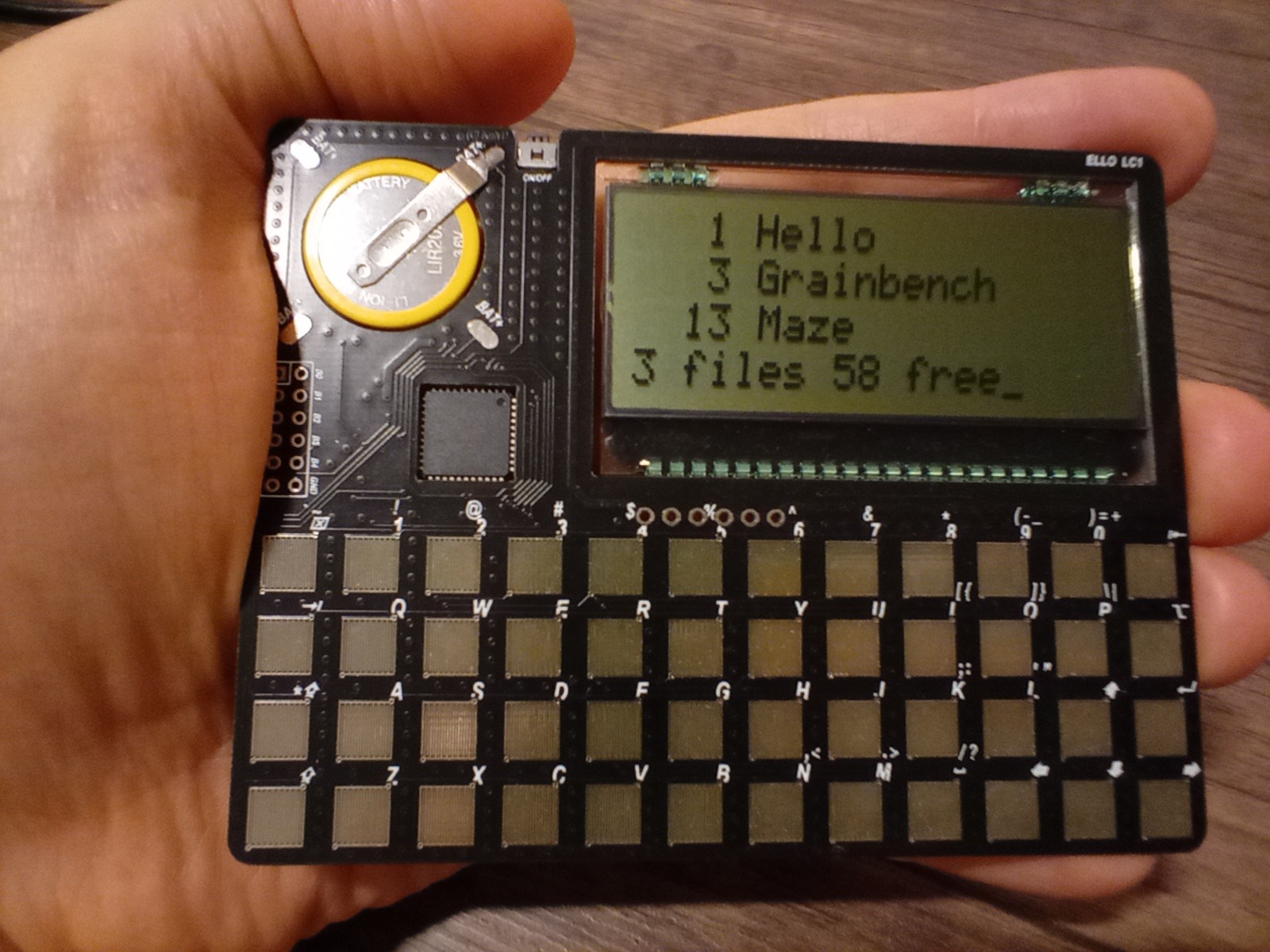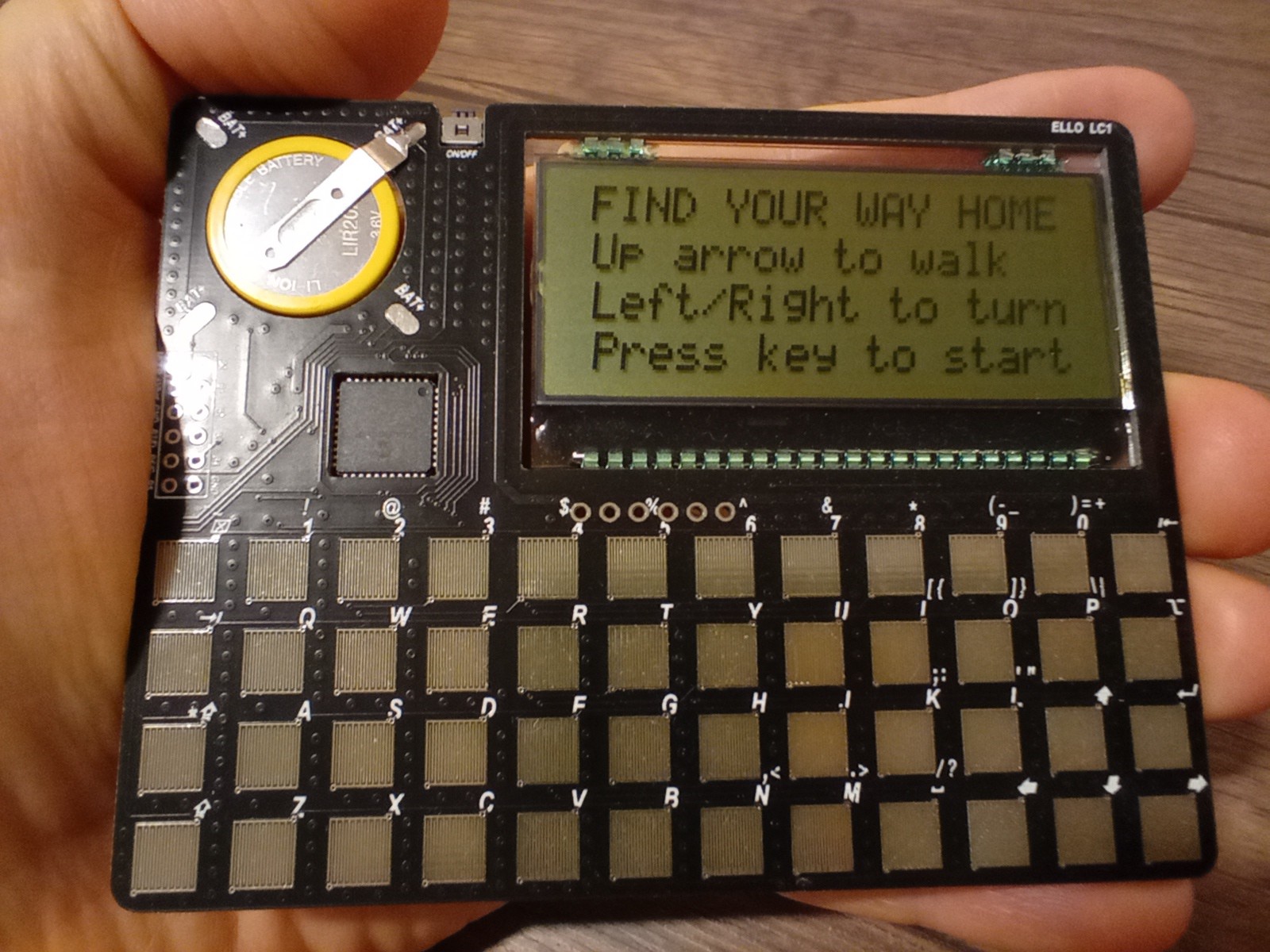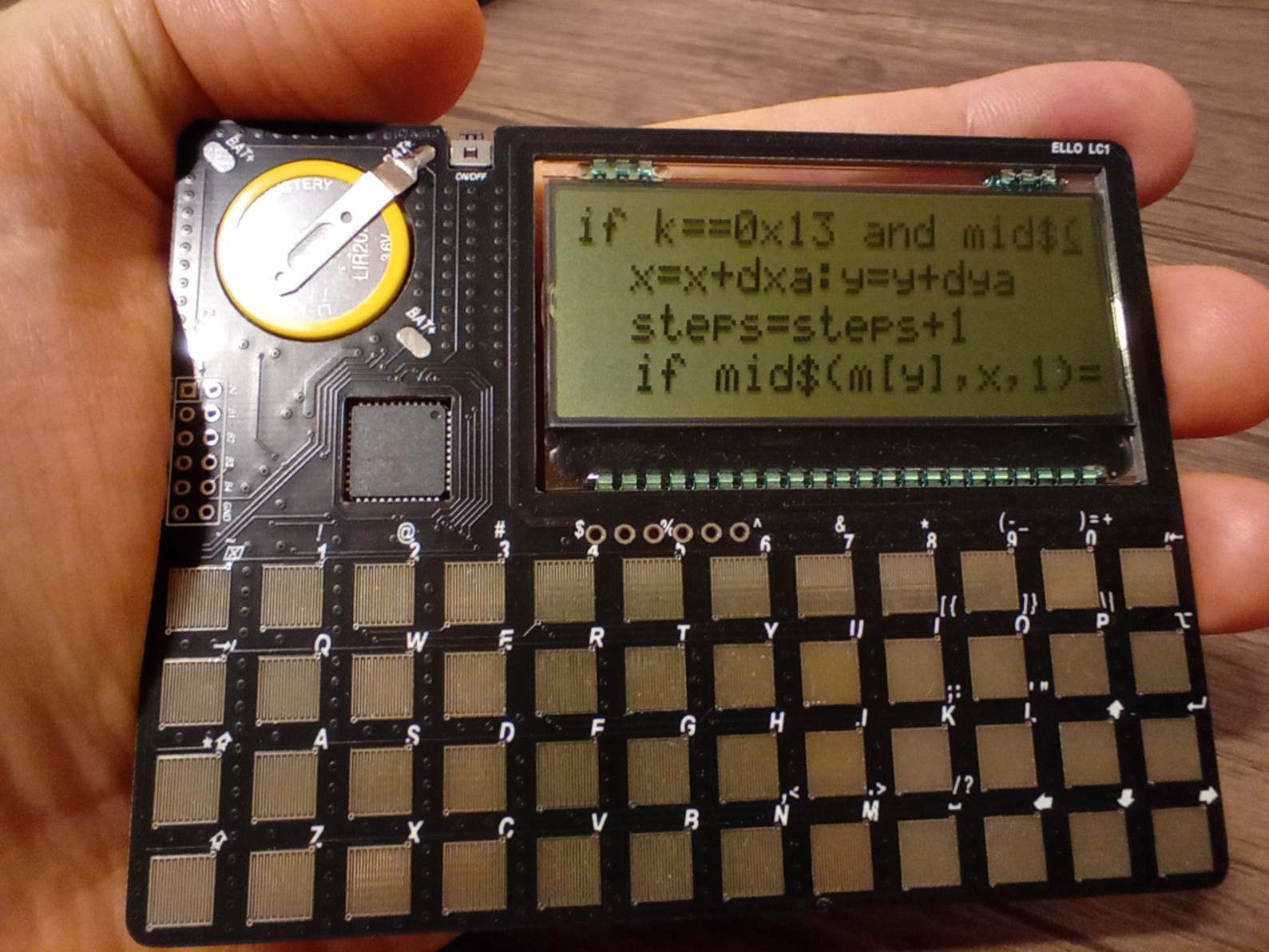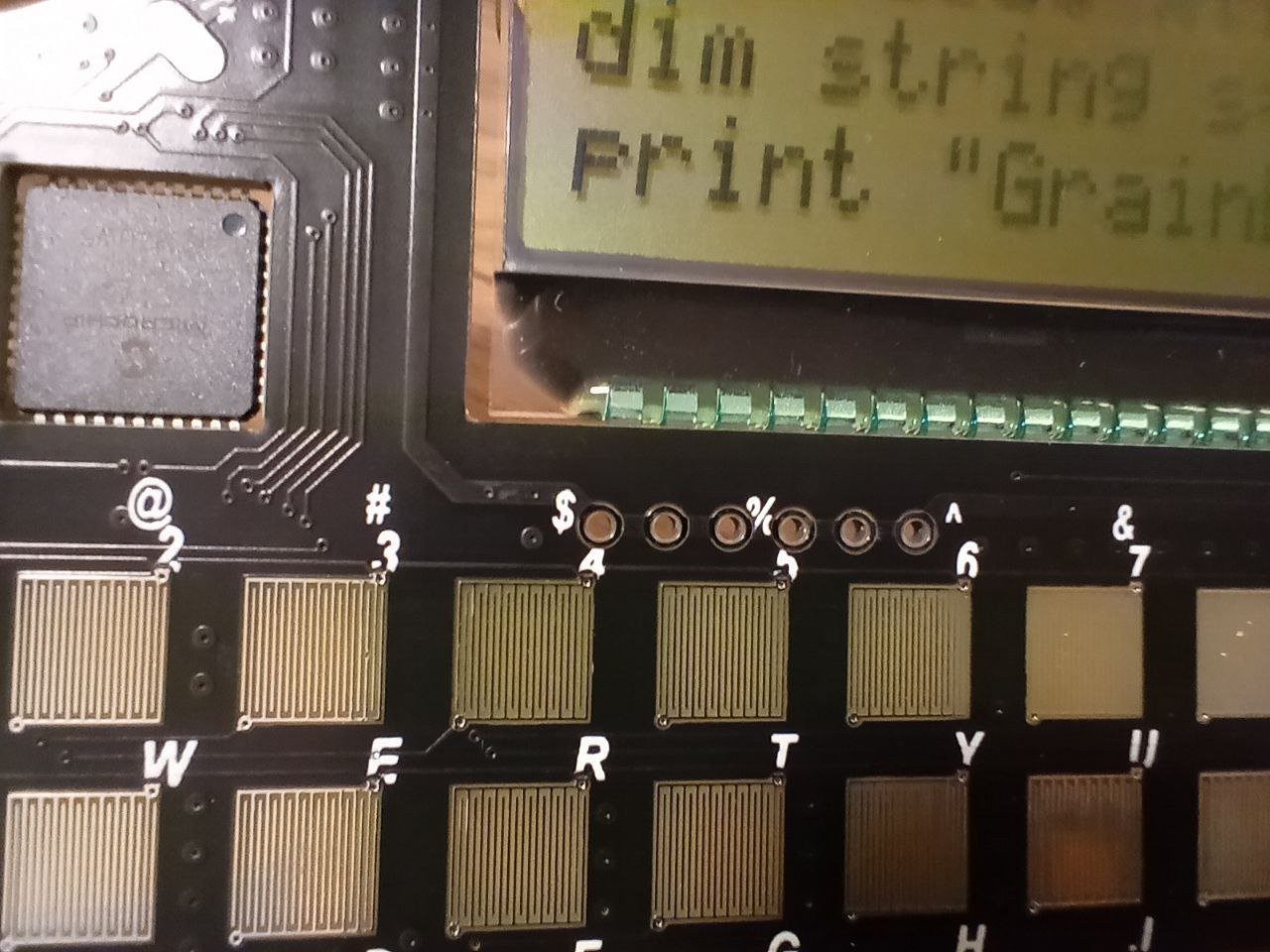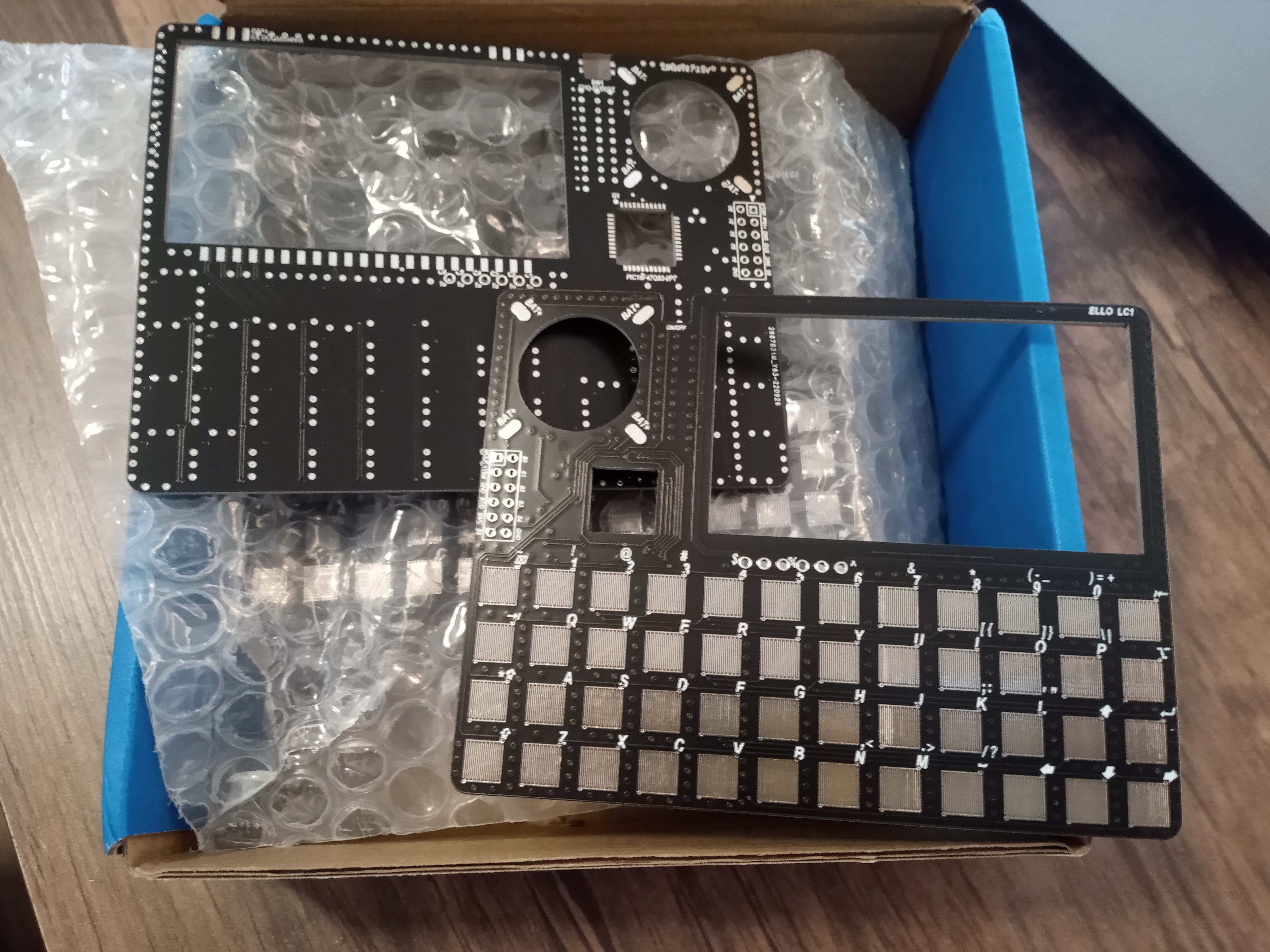-
Finally - the 'release' version PCB
01/11/2023 at 21:49 • 0 commentsThe release version PCB of ELLO LC1 finally arrived, and although it can't be seen on the picture, the manufacturing quality is *amazing*!
Here are also a few pictures (with my old prototype) showing the pre-loaded content on the ..."hard drive" :) The usual "Hello World" thingy, a port of the Grain benchmark, and a simple walk-through-maze game.
![]()
![]()
![]()
![]()
![]()
-
Three is Enough
11/07/2022 at 21:10 • 3 commentsWhich assembling another ELLO LC1, I decided to push my luck and skip the six capacitors, normally needed for the operation of the LCD. It lives!! A second test - lives again! I am not observing any reduction in the quality of the displayed text.
Turns out, ELLO LC1 can operate with ONLY THREE COMPONENTS (plus battery, of course) - PIC18, LCD, and the reset button, which is important to turn the system on or off.
Just FYI to all who may want to assemble one of these :)
![]()
-
New PCBs
10/05/2022 at 14:37 • 1 commentRelease candidates of LC1 just arrived.
The bottom side is with a lot of exposed ground copper now, because it turns out it massively improves the performance of the touch keyboard.
Also, the battery hole is now a bit smaller, and the soldering rings for the capacitors - a bit wider.
All looks fine but need to assemble one for test anyway.
![]()
-
Current progress
10/04/2022 at 19:26 • 1 commentFinally managed to track down and fix a nasty memory leak which was happening when using string constants. Took a week, this thing alone!
Below is the list of currently supported keywords and what is left to do to full release:
Bitling BASIC interpreter ' comment until the end of the line === Data types INT (also INTEGER for compatibility) REAL (also FLOAT for compatibility) STRING === operators + - * / // or MOD ' modulo ^ ' power << ' shift left >> ' shift right = ' (in statements) attribution == or = ' (in expressions) compare for equal <> ' compare for not equal < <= => > AND OR XOR === variables VAR <type> <name> { [dimension [, dimension...] ] } { , <name> ... } ' DIM is alias to VAR for backward compatibility examples: var int a, b[3,3] var real x, z[10,10,10] var string s[5] ' array of five zero-terminated strings ' () are also supported in variable indexes instead of [] for backward compatibility === control structures IF <expression> THEN { ELSE } END IF or ENDIF FOR <variable> = <expression> TO <expression> { STEP <expression> } NEXT { <variable> } WHILE <expression> END WHILE or WEND REPEAT UNTIL <expression> CONTINUE ' valid for FOR, WHILE, and REPEAT structures EXIT ' valid for FOR, WHILE, and REPEAT structures LABEL <label_name> GOTO <label_name> END ' STOP is also supported and act the same way as END === subroutines SUB <name> { ( <type> { @ } <variable> { , <type> ... } ) } FUNC <name> { ( <type> { @ } <variable> { , <type> ... } ) } { AS <type> } RETURN { variable } END SUB or ENDSUB GOSUB <sub_name(...)> ' optional calling format for subs examples: sub test1 func average(real a, real b) as real sub store1(int x, int y, int @arr) === commands PRINT { expression { , expression ... } } DATA expression { , expression ... } READ variable { , variable ... } REWIND ' return to the first DATA element POP ' remove one return address from the stack POKE <addr, val RESET ' restart the system SLEEP ' put the system to sleep INKEY variable GET variable { , variable ... } INPUT variable { , variable ... } CLS HLOC <column> VLOC <row> PUTCH <ascii> DEFCH <chrcode> <byte1> <byte2> <byte3> <byte4> <byte5> <byte6> <byte7> <byte8> SELCHT < 1, 2, or 3 > CURSOR < bit.0 blink, bit.1 enable > SCROLL < bit.0 up, bit.1 down, bit.2 left, bit.3 right > TDREF ' refresh the text display (used after direct writes into TD RAM) WAIT <milliseconds> === functions RND (val) ' parameter other than 0 first seeds the generator with the value ABS (val) ROUND (val) TRUNC (val) FRACT (val) LOGN (val) LOGD (val) EXP (val) SQR (val) ' square root CBR (val) ' cube root SIN (val) ASIN (val) HSIN (val) COS (val) ACOS (val) HCOS (val) TAN (val) ATAN (val) HTAN (val) COTAN (val) FREE () ' return the largest free block in memory TDRAM () ' return the text display RAM address TDTDT () ' text display width TDHGT () ' text display height PEEK (addr) ' 0 and positive numbers: RAM address, negative numbers: ROM address-1 ASC (str) ' character (first in string) to ASCII CHR$ (val) ' ASCII to character (one-character string) VAL (str) ' string to number STR$ (val, d) ' number to string; "d" specifies the number of digits after decimal point LEN$ (str) LEFT$ (str, count) RIGHT$ (str, count) MID$ (str, start, count) INSTR (substr, str, start) TIMER (value) ' read system millisecond incremental counter; any value different than 0 first loads the counter === TODO: CLEAR [ ALL or var [ , ... ] ] ' undefine variables work with files OPEN <filename> as #<variable> PRINT #<variable> , ..... INPUT #<variable> , ..... GET #<variable> , ..... CLOSE <variable> IO port UART PWM ADC DAC -
Versions
09/30/2022 at 08:48 • 2 commentsWhen I was designing this board, in fact I designed three different boards - LC1 (this one) with PIC18, LC2 with AVR-DA or -DB, and LC3 with PIC24. Since I have no experience writing for AVR, and that's why started the software with this one, and porting to the PIC32 should not be a big task either. Not completely sure about the AVR one, though.
Will release all the three at the same time soon.
 Kn/vD
Kn/vD
